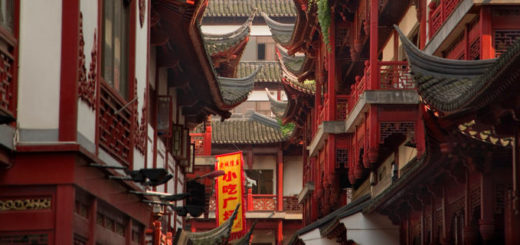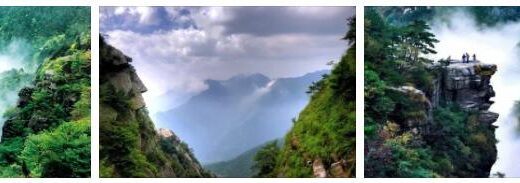Lijiang Old Town (World Heritage)
Lijiang is located on a plateau at an altitude of 2600 m with a view of the Jade Dragon Snow Mountains. The old town is criss-crossed with a labyrinth of alleys and waterways. It is the center of the Naxi, the descendants of Tibetan nomads.
Lijiang Old Town: Facts
| Official title: | Lijiang old town |
| Cultural monument: | within Lijiang the old town (Dayan), located on a 2600 m high plateau and in the view of the Jade Dragon Snow Mountains (Yulong Xue Shan); flowed through by water and traversed by a labyrinth of alleys and streets, the center of the Naxi, which comes from northeast Tibet, with houses in “five-colored stone” and enclosed courtyard gardens |
| Continent: | Asia |
| Country: | China, Yunnan |
| Location: | Lijiang, north of Dali, southeast of Lhasa |
| Appointment: | 1997 |
| Meaning: | Example of a complex historical urban complex that has combined influences from different cultures for centuries |
Lijiang Old Town: History
| 1127-1279 | Foundation and expansion of the city |
| 1253 | Kublai Khan’s campaign to conquer Yunnan, stay in Lijiang |
| 1271-1368 | City with about a thousand families |
| after 1996 | Restoration of the old town after an earthquake |
At the foot of the “Jade Dragon”
According to internetsailors, when China was hit by the economic miracle in the mid-1980s and modernity moved into the coastal cities of the south and east, this development passed the town of Lijiang completely by. While the old towns fell victim to the wrecking ball almost everywhere in China as part of the decreed modernization and instead faceless concrete buildings grew into the sky, the city fathers in remote Lijiang simply did not have the money for such measures. Thank goodness – because this enabled an architectural jewel to be preserved that is meanwhile unparalleled in the “Middle Kingdom”.
You won’t find historical monuments of national importance in Lijiang, but a beautiful old town with centuries-old wooden houses that nestle close to each other along narrow canals. Life seems to be as it did hundreds of years ago in the cobblestone streets. People are out and about in the city with bicycles and handcarts, there is no space for cars in the narrow streets. Many of the city’s residents still wear their old, richly decorated costumes and live from traditional handicrafts. Strictly speaking, Lijiang is not a “Chinese” city at all. The majority of its residents belong to ethnic minorities, which differ significantly from the Chinese “Han people” in language, writing, religion, customs and traditions. More than half of the residents belong to the Naxi tribe, whose language is attributed to the Tibeto-Burmese family. The rest are members of the Bai, Pumi, Mosuo, Lisu, Yi, Tibetans or Han Chinese.
In the religion of the Naxi, animist, Daoist, Muslim and Lamaist elements are united. It is particularly noteworthy, however, that the Naxi originally lived in a matriarchal form of society, to which the “Azhu” (“friendships”) called “open marriage” belongs. The women were “mistresses” of the house and kept lovers who mostly stayed with them but otherwise lived in their mothers’ household. Such relationships could be ended at any time by both sides and new ones entered into. Raising children was the sole responsibility of women, and they alone had the right of inheritance. However, this way of life is rarely practiced today – not least because the Chinese central government considers it “immoral”.
In 1996 Lijiang’s idyll was almost over when a severe earthquake shook the city and caused many houses to collapse. Above all, those that had been built using modern concrete construction collapsed like a house of cards, while only a few traditionally built in the old town alleys. As part of the rebuilding of the city, the Chinese government invested a lot of money in restoring and maintaining the old town. And, as the city fathers see today, this investment is paying off in hard cash. Lijiang is now one of the most famous travel destinations among travelers to China. Millions of tourists visit the old town every year, but its historic ambience is increasingly being strained by new shops, restaurants and bars.
Lijiang not only has picturesque alleys to offer, but also charming surroundings, a mountain landscape with spectacular peaks almost 5600 meters high – a paradise for hikers, mountaineers and hobby botanists. And meanwhile, with increasing tourism, the economic miracle has also found its way into the city – albeit in a gentler way than in China’s “boomtowns” in the east.



